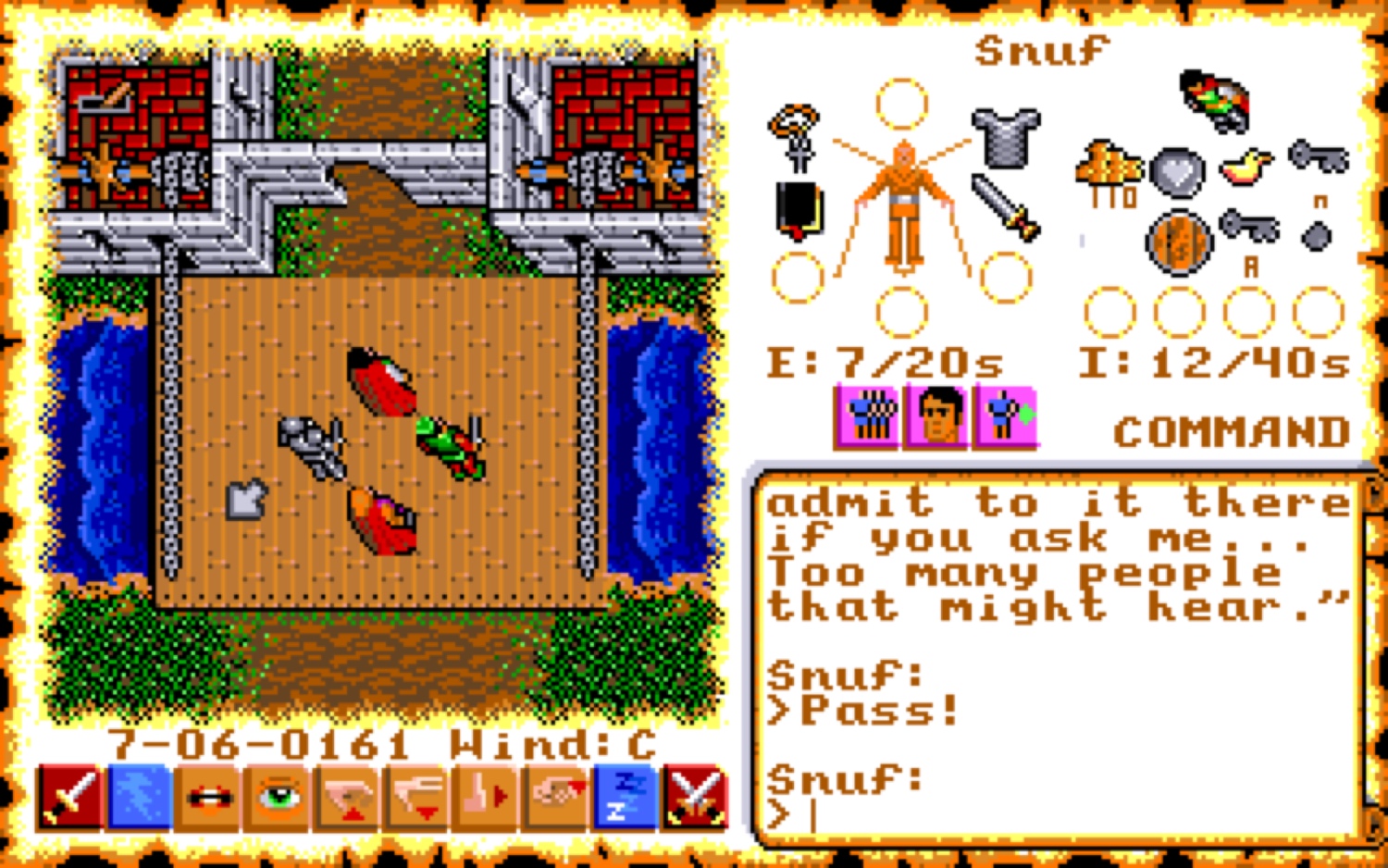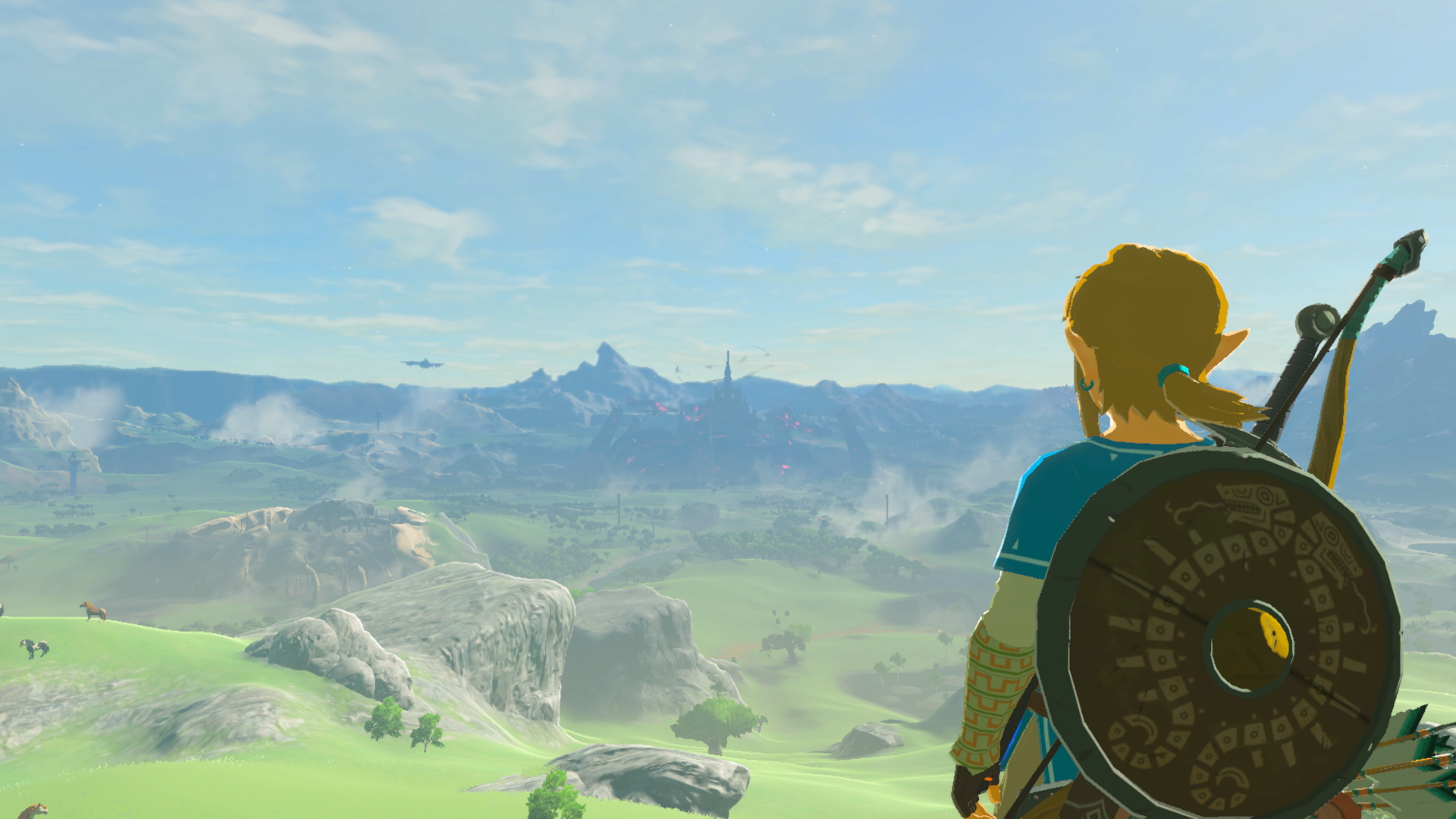I’ve been thinking about the way The Legend of Zelda: Breath of the Wild, one of the best thing’s Nintendo’s yet made, reminds me of another game I played over a quarter century ago.
I can’t remember where, but at some point in early 1990 I read an interview with Richard Garriott—the same Richard Garriott (de Cayeux) now celebrated for catching a $30 million ride to the International Space Station in 2008. But in 1990, he was still better known as “Lord British,” after a benevolent monarch who ruled over a fantasy computer domain Garriott dreamed up in the early 1980s.
The interview concerned the sixth game in that series, Ultima VI: The False Prophet, a swords and sorcery romp that also, unusually for a video game, wrestled with themes like racism and xenophobia. It’s been 27 years since I’ve thought about gargoyles and codexes and vortex cubes, thus I can’t say how a story that seemed weighty then might come across now. But I do remember Garriott explaining part of what inspired Ultima VI‘s world design stemmed from his frustration with the way puzzle solving in games worked.
His anecdote is lost to me, but it involved a game in the classic adventure style, where players have to pore over a scene, then figure out what the designers expect them do. Let’s make one up that’s close enough: Imagine you had to get through a locked castle door near which lay a rusted metal box and a sword half-hidden in some bushes. Once you’ve noticed the sword, you might pick it up, then discover it can pry open the box. And presto, there’s the key. Problem solved.
Try anything else, of course, and problem not solved, as in never ever. The box couldn’t be kicked or dropped. The sword might as well have been a screwdriver or crowbar. You couldn’t knock on the door, or just quit the scene altogether. These things were fixed points along a chain of deductions. You either saw them or you didn’t. (And if you didn’t, since this was pre-Google, your only recourse was to dial the company’s paid tips hotline). Garriott’s punchline went something like this: “Why wouldn’t you just pick up the sword and hack down the door?”

Hence Ultima VI, a proto-open world in which countless exhaustively catalogued objects, from swords and treasure chests to cheese wheels and cutlery, could be employed to interact in ways objects in games had never been able to. Each had its own weight and durability, a mind-blowing concept in 1990. Contrast with the relative spareness of the world in Square Enix’s Final Fantasy, which graced North American shores by way of the Nintendo Entertainment System the same year.
Yes, you could still patiently pick through the scenery for keys to doors and chests. But you could also throw caution to the wind and bash them to smithereens. The sense of something long anchored beginning to move was palpable. Giving objects heft also meant you had to think about how many things you could jam into a satchel. And the game included a rudimentary economy. You could buy wheat from a farmer, for instance, grind it at a village mill, then bake it into bread—the birth of virtual toiling as unfettered bliss.
Big deal, we’d say now with our snazzy Fallout 4s and Stardew Valleys, like dragons lazing on piles of gold. But at the time it was heady stuff. Every gamer has a story about the first video game that fired their imagination. For some it might be 1962’s Spacewar!. For others, David Braben and Ian Bell’s Elite. If you’re younger, maybe you’d say Chrono Trigger, or Ico, or BioShock. Fine choices all. But Ultima VI was mine.

Breath of the Wild couldn’t be less like Ultima VI when you contrast themes or tone or interfaces or visual design. I’m not here to make tortured analogies between the two. Ultima VI was a Western medieval fantasy pastiche you played from a top-down perspective. Breath of the Wild is like stepping into a watercolor dreamscape plucked from Japanese myth. These are decidedly different experiences, their connection points at the highest levels.
And yet. I think it’s something to do with their shared reverence for player curiosity, but also maybe that Breath of the Wild seems (as Ultima VI was) a glimpse of things to come. Ultima VI attempted to imbue an entire world with an order of magnitude shift in mundane pliability—there was nothing else remotely like it. Breath of the Wild feels like another such shift, a masterfully Zelda-fied commentary from producer Eiji Aonuma and director Hidemaro Fujibayashi’s on the delicate dynamic between wondering and doing.
It comes back to the story of the sword and the door. In 1990, Garriott persuaded me that the gaming future I wanted was fractal, that freedom (whether objective or illusory) was a function of intuition, and thus in games, of proliferating the ways in which players could act as they might were an imaginary world suddenly tangible. And in 2017, with a game a thousand times as beguiling and composed, elegiac and whimsical, Nintendo is showing us what it looks like to draw theory and surprise that much closer together, and on an unparalleled scale.
Buy now: The Legend of Zelda, Breath of the Wild, $59, Amazon
More Must-Reads from TIME
- Caitlin Clark Is TIME's 2024 Athlete of the Year
- Where Trump 2.0 Will Differ From 1.0
- Is Intermittent Fasting Good or Bad for You?
- The 100 Must-Read Books of 2024
- Column: If Optimism Feels Ridiculous Now, Try Hope
- The Future of Climate Action Is Trade Policy
- FX’s Say Nothing Is the Must-Watch Political Thriller of 2024
- Merle Bombardieri Is Helping People Make the Baby Decision
Write to Matt Peckham at matt.peckham@time.com